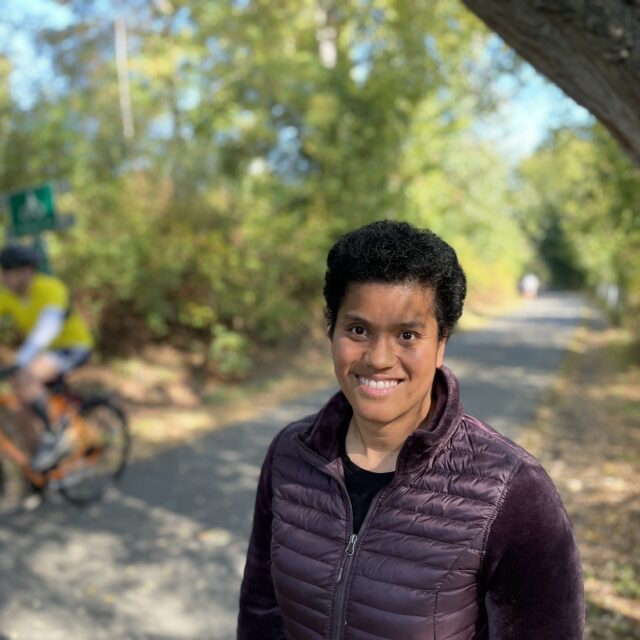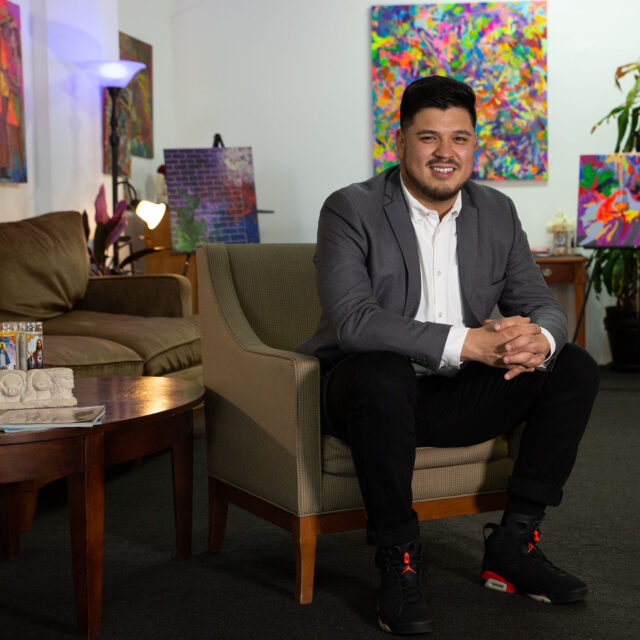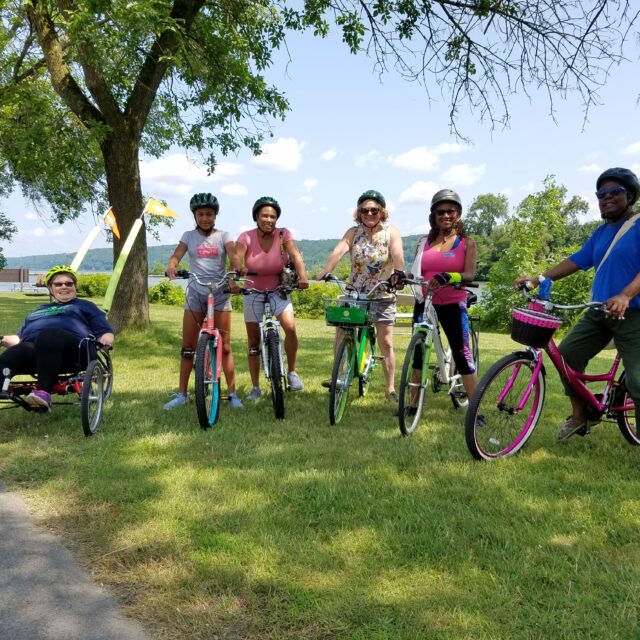The Limits of Rural Mobility
by Marcela Moreno, 2021 Transportation Justice Fellow
December 6, 2021
Marcela Moreno, a 2021 Transportation Justice fellow, discusses the ways transportation (or lack thereof) impacts rural communities — and what needs to be done.
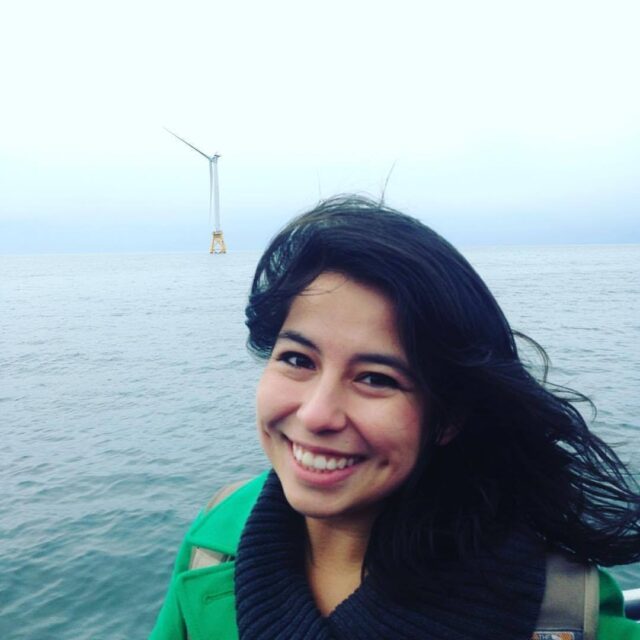
Marcela Moreno is a transit technologist at the Community Transportation Association of America.
In May 2020, I was celebrating my birthday in Banner Elk, North Carolina, population 1,000. It was the peak of the pandemic and I was grateful to find a cabin for a weekend away with my partner. The rural area is full of outdoor recreation opportunities and we were hoping to hike before getting dinner in the neighboring town of Boone. Our plans were thwarted when a woman backed into my car and an accident slowly evolved into an ordeal.
The woman that hit me was trying to avoid involving insurance. She attempted to get me to follow her home, insisting that she’d pay for the damage out of pocket. She’s been in too many accidents lately and was at risk of losing her license. At one point, the woman stated point-blank, “If you call the police [to file a report], I’ll just tell them that you hit me.” My partner, sensing that she was acting erratically, recorded our conversation.
Suddenly, the environment changed. The woman drove off in a panic and I assumed this was now a hit and run. After calling my own insurance company, she returned. She tried to enter my car. She drove away again. She came back with cash in hand but by then, a state trooper was on their way. She drove away again, found the state trooper, and lied about what she had done. When the state trooper approached us, he believed I was at fault.
Although my partner’s recording absolved us, we hardly felt relief. That night, I cried. I felt an overwhelming sense of guilt for the woman, who likely acted out of desperation and now stood to lose her main mode of transportation in an area that has few alternatives. Banner Elk, like many small towns across the country, doesn’t offer public transportation, but rather a demand-response service that requires 24-hour notice for in-county trips and seven days for out-of-county trips. While biking and hiking are extremely popular recreational activities, there’s a lack of sidewalks and challenging terrain, discouraging casual riders and pedestrians alike.
I work for the Community Transportation Association of America (CTAA) as a transit technologist, but more generally, I consider myself a transportation planner. I believe mobility is a basic human right, as does CTAA. Many of the communities that I work with aren’t so different from Banner Elk—they struggle with inadequate funding, policies, and resources, unable to offer reliable mobility options. In a place like Banner Elk, a car can be a lifeline, a fact that helped put my interaction with the woman who hit me into perspective.
Recently, Smart Growth America and the Third Way released, “Rural Communities Need Better Transportation Policy,” which touches on ways federal lawmakers might rethink rural transportation policy. Improving transportation and mobility in rural areas is an equity issue. As demonstrated in the report, rural residents in low-density areas must travel farther to access shopping, work, and social connections. Rural America is not a monolith, but its residents can often face similar struggles in traveling long distances to access essential services (such as regional hospital systems for specialized care), higher education, and grocery stores, among other things.
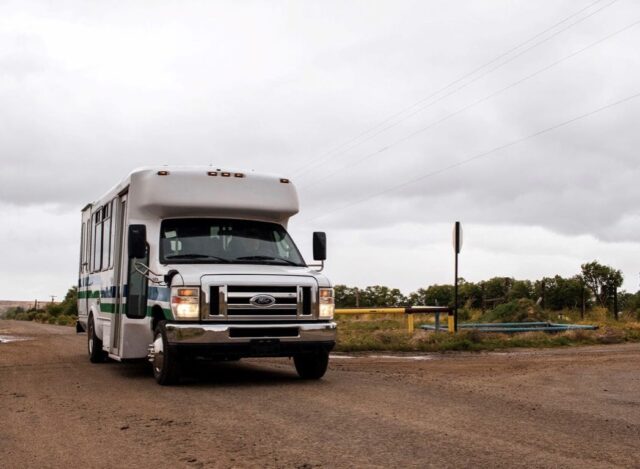
A cutaway transit bus traveling on a tribal gravel rural road near Farmington, New Mexico. (Credit: Capacity Builders)
The Aspen Institute released a memo in 2019, “A Few Things to Know About Rural America,” painting a snapshot of life in these areas. The report shares a key fact about rural communities: While the percentage of people living in rural areas has decreased, the overall number has increased. In 2017, the rural poverty rate stood at 16.4%, with urban poverty at 12.9%. Rural children are also more impacted by poverty, with the rural poverty rate at 22.8% and the urban poverty rate at 17.7%. While persistent poverty has decreased (counties with 20% or higher poverty for the past four decennial census counties), the report states that most areas “where severe poverty persists are found in the Mississippi Delta, Appalachia, northern Maine, Indian Country, and colonias [unincorporated areas located along the Mexico–United States border region] with a few exceptions, predominantly counties where people of color are the majority.”
Rural residents are burdened with piecing together transit options through various local or regional providers to have freedom of movement. Sidewalks and bike lanes are not as prevalent or connected as they are in urban areas, making multimodal trips challenging even for a seasoned pedestrian or cyclist. On an individual level, getting coordinated information to make these complex trips can be difficult, especially considering the lack of broadband access in rural counties. Investing resources and time into these areas can not only help people age in place but can create vibrant communities where people want to stay.
In a previous job, working as the transit projects coordinator for the City of Asheville, I would sometimes get phone calls from people trying to use public transportation to cross three separate counties. To do so, they would need to navigate three to four public transit systems, some demand-response, and others fixed-route. So even if there are reasons for agencies to limit service to certain areas, the reality is that people don’t live their lives within geopolitical boundaries. We move around regions to access the services we need and to do the things that bring us joy.
For example, let’s say someone without a car calls from Madison County in North Carolina and is working at Mission Hospital in Asheville. They would need to navigate Madison County’s demand-response service, transfer to Buncombe County’s demand-response service, and connect to the City of Asheville’s fixed-route service (which itself would require a transfer from one route to another). That’s two phone calls and a ton of planning to successfully execute four transfers and an hour and a half journey. If you had a car, your trip would take 30 minutes.
Compared to driving, that’s hours lost—hours where you need childcare, where you could have worked, or where you could have spent time with loved ones. To reclaim their time and their freedom, rural residents are pushed to own a vehicle. In a 2017 report, the American Public Transportation Association noted that “because of lower average incomes and higher vehicle mileage, rural households spend a much greater portion of their budgets on transportation than urban households.”
Rural poverty looks very different from urban poverty. Without the concentration of social services, jobs, and recreation activities that you see in urban areas, you need to choose: car ownership and a significant monetary hit, or public transportation with a significant time commitment? If you can’t drive because you are elderly or a person with a disability, your options are even more limited. And if you live without broadband, things are near impossible.
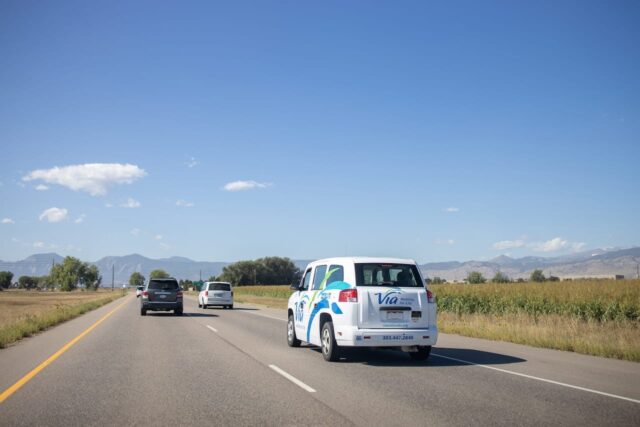
A volunteer transportation vehicle shares the road. (Credit: NADTC)
Much of the information available on public transportation can be found in-person at points of interest (such as senior centers or transit stations), or spread by word of mouth. However, dealing with three different providers is much easier with reliable internet. Folks in urban areas may be able to use something like the Transit App or Google Maps for wayfinding, but seniors might not have smartphones or be comfortable using mobile apps even with LTE or 5G access.
Many of the phone calls that I received about regional transportation in Western North Carolina were about navigating the disparate public transportation systems. Every time I explained that they would need to plan and coordinate their travel between separate booking systems, I could hear the frustration in people’s voices. To connect our rural communities to the services they need would require an investment in a coordinated, robust, and frequent transit service and connectivity by way of universal broadband access.
The Smart Growth America and the Third Way report offers some solutions for rural communities across the country:
- Invest heavily in transit in rural areas.
- Prioritize projects that improve access and reduce trip lengths.
- Prioritize safety for everyone in developed areas, such as town centers.
- Focus transportation policies and standards on the most vulnerable people using them, including pedestrians and bicyclists, people with disabilities, seniors, and others who experience more risk than vehicular traffic.
- Prioritize maintaining rural highways over expanding them.
- Connect rural communities by making a sizable investment in broadband access.
- Recalibrate federal agency policies and grant programs to better support rural town centers.
There are already many advocacy groups and municipalities working to provide technical assistance and grants to rural communities. In addition, the community of people working behind the scenes for rural public transportation agencies is strong. There are a number of federally-funded technical assistance centers that can provide information or connection to people who have worked on these issues.
Still, it’s hard not to feel disheartened by the state of rural transportation affairs—or overwhelmed by the interconnectedness of mobility, health outcomes, economic distress, and social isolation. The Infrastructure Investment and Jobs Act is a great nudge in the right direction, but America’s rural communities need stable, ongoing commitment to ensure that its people have access to the same opportunities and quality of life as those in urban areas. It’s the responsibility of all of us working in transportation to reconsider our urban prejudice and not leave millions behind.
The Better Bike Share Partnership is funded by The JPB Foundation as a collaboration between the City of Philadelphia, the National Association of City Transportation Officials (NACTO) and the PeopleForBikes Foundation to build equitable and replicable bike share systems. Follow us on Facebook, Twitter, and Instagram, or sign up for our weekly newsletter. Got a question or a story idea? Email kiran@peopleforbikes.org.

